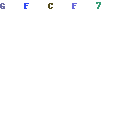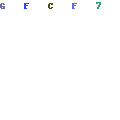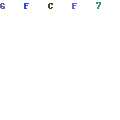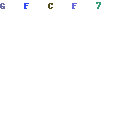IRA vs. 401k: Diverse Knowledge for Adults
Retirement planning plays a critical role in ensuring a comfortable and secure future for individuals as they age. With an array of options available, understanding the nuances of the two most popular retirement accounts- Individual Retirement Account (IRA) and 401(k) plans, becomes crucial in making informed decisions. This investigation delves into the essential aspects of both IRA and 401(k) plans and offers a comparative analysis to assist individuals in making optimal choices to suit their specific financial requirements and goals, inclusive of maximizing their retirement savings, managing taxes, and adhering to pertinent regulations.
Understanding IRA vs. 401k Accounts
One crucial aspect to consider in the IRA vs. 401k debate is the differences in their fundamental structures. An Individual Retirement Account (IRA) is a savings account designed to help individuals save for retirement in a tax-advantaged way. An IRA can be opened and managed by an individual, whereas a 401k is typically sponsored and administered by an employer. While both options aim to help an individual secure a comfortable retirement, the benefits and rules that apply to each differ and can have a significant impact on one’s financial planning.
There are two main types of IRAs: Traditional and Roth. With a Traditional IRA, contributions may be tax-deductible, depending on one’s income level and participation in an employer-sponsored retirement plan. Investment earnings grow on a tax-deferred basis, and withdrawals at retirement are taxed as ordinary income. Roth IRA, on the other hand, accepts after-tax contributions, meaning that any withdrawals made are tax-free. This type of IRA may be a more advantageous option for those who expect their tax rate to be higher during retirement than during their working years.
Eligibility to contribute to an IRA is mostly determined by one’s taxable income. An individual must earn taxable income for a specific year to contribute to that year’s IRA. In some cases, a non-working spouse can open and contribute to an IRA based on the working spouse’s earnings. It is worth noting that there may be limitations on contributing to a Traditional or Roth IRA based on one’s income or an existing employer-sponsored plan.
Contribution limits for IRAs are generally lower than those for 401k plans. As of 2021, the maximum contribution for an IRA is $6,000 per year for individuals under the age of 50 and $7,000 for those aged 50 or older. In contrast, the 2021 contribution limits for 401k plans are $19,500 for individuals under 50 and $26,000 for those aged 50 or older. Therefore, employees with access to both an IRA and a 401k may allocate their retirement savings across both accounts, maximizing their tax benefits and retirement income potential.
Understanding the nuances of IRAs and 401k plans is essential in making informed decisions for retirement savings. Though they share a common goal, factors such as tax benefits, income eligibility, contribution limits, and employment status should be weighed carefully against one’s individual financial situation and goals. By amassing a comprehensive understanding of these retirement account options, individuals can make strategic choices in their retirement planning, optimizing their savings strategy to reach their desired retirement lifestyle.

401k Plans and IRAs: Understanding the Differences
Individual Retirement Accounts (IRAs) and 401k plans are two of the most popular options for retirement savings among American adults. A 401k plan is a retirement savings account offered by employers to their employees, whereas an IRA is an independent retirement account that any individual can open on their own. Despite their similar purpose of allowing individuals to contribute pre-tax dollars to grow their retirement savings, it’s crucial to keep in mind the key differences between the two when considering which option best aligns with personal financial goals and circumstances.
One important aspect of a 401k plan is the distinction between a Traditional 401k and a Roth 401k. A Traditional 401k allows an individual to contribute pre-tax income to their retirement savings account, reducing their taxable income for the year. The contributions and earnings within the account grow tax-deferred, but the withdrawals during retirement are subject to taxation at the individual’s ordinary income tax rate. Conversely, a Roth 401k works on an after-tax basis, meaning contributions do not reduce an individual’s taxable income, but the growth and withdrawals during retirement are tax-free.
Eligibility for a 401k plan is generally determined by an employer’s rules and regulations, with some companies requiring employees to work a certain number of hours or complete a specified period of service before they are eligible to participate. For IRAs, however, there are no eligibility requirements related to employment or income, as long as the individual is under the age of 70 ½ and has taxable income.
Contribution limits also differ between 401k plans and IRAs. For 2021, the annual 401k contribution limit is $19,500 (with an additional $6,500 catch-up contribution for individuals aged 50 and older). On the other hand, the 2021 annual contribution limit for IRAs is $6,000 (with a $1,000 catch-up contribution for those aged 50 and older). These contribution limits are subject to change on an annual basis and are usually based on adjustments for inflation.
Employer matching is another significant benefit of 401k plans that is not available with IRAs. Many employers match a portion of their employees’ contributions to their 401k plans, providing an additional incentive for workers to save for retirement. This matching can be in the form of a dollar-for-dollar contribution, a percentage of the employee’s salary, or another arrangement as determined by the employer’s policies. This matching essentially represents “free money” for the employee and can significantly increase the overall growth of their retirement savings.
Vesting schedules are a crucial aspect of understanding the difference between Individual Retirement Arrangements (IRAs) and 401(k) plans, both of which are tax-advantaged retirement accounts designed to help individuals save and invest for their retirement. A vested interest means that the employee has the unassailable legal right to retain the employer’s contributions to their 401k account, even if they leave the company. Depending on the employer’s policies, a 401k plan may follow a graded or cliff vesting schedule – it may require a specific number of years of service before the employee acquires full ownership of the employer’s contributions or it may grant proportionate ownership in increments over time. In contrast, vesting schedules do not apply to IRAs, as individual contributions are fully vested from the start.

Understanding the Key Differences Between IRAs and 401(k)s
Aside from vesting schedules, other key differences between IRAs and 401(k)s can impact an individual’s flexibility, investment options, fees, and tax treatment. While both types of accounts serve similar saving and investment purposes, understanding these distinctions can help individuals make informed decisions about their retirement strategy and optimize their financial outcomes in the long-term.
Accessibility and Eligibility
401(k) plans are employer-sponsored, which means you must work for a company that offers a 401(k) in order to participate. On the other hand, IRAs are available to any individual with earned income, making them more accessible to self-employed individuals or those whose employers do not offer retirement benefits. This difference has a direct impact on the flexibility of each type of account; employees who leave their jobs may not have access to their 401(k) accounts, whereas IRAs are always accessible regardless of employment status.
Investment Options
401(k) plans tend to offer a limited selection of mutual funds or target-date funds, as chosen by the employer or plan administrator. This limited selection may constrain the ability of participants to fine-tune their investment strategies or take advantage of specific investment opportunities. IRAs, meanwhile, offer a greater range of investment options, including stocks, bonds, mutual funds, ETFs, and even alternative investments like real estate or precious metals. This wider variety allows IRA holders more control over their portfolios and investment decisions.
Fees
Generally, 401(k) plans are more expensive in terms of management fees than their IRA counterparts. IRAs tend to have lower fees, as individuals often manage their own accounts and shop around for the lowest-cost investment options. Plan administrators often charge participants for record-keeping, investment management, and other services, which can eat away at the overall returns of the account.
Tax Treatment
Both IRA and 401(k) accounts have tax-deferred growth, meaning that investments within the account are not taxed until withdrawals begin. Traditional IRAs and 401(k)s both receive pre-tax contributions, which can lower an individual’s taxable income during their working years. Roth IRAs are funded with after-tax dollars, which allows for tax-free withdrawals in retirement. Some employers offer Roth 401(k) options, which combine the benefits of Roth IRAs with the employer-sponsored nature of 401(k) plans.
When it comes to optimizing your portfolio for retirement savings, it is crucial to consider both the benefits and drawbacks of Individual Retirement Accounts (IRAs) and 401(k) plans. Both of these investment vehicles can help build wealth for your retirement years, but they differ in terms of flexibility, tax implications, and contribution limits. By understanding these differences, you can make an informed decision on the best strategy for your individual needs and goals.

Optimizing Your Retirement Portfolio with IRAs and 401(k)s
Contribution Limits
For 2021, the annual contribution limit for an IRA is $6,000 ($7,000 for those aged 50 or older), while the limit for a 401(k) is significantly higher at $19,500 ($26,000 for those aged 50 or older). Additionally, many employers offer matching contributions to their 401(k) plans, effectively providing “free money” to employees and incentivizing retirement savings. Financial experts recommend utilizing both types of accounts to maximize tax advantages and saving potential, aligning well with your understanding of the differences between IRAs and 401(k)s.
Diversifying your investments between an IRA and a 401(k) can be beneficial because it allows you to take advantage of the unique features of each plan. For example, IRAs typically offer a broader range of investment options compared to 401(k) plans, which could help you to build a more diverse and robust portfolio. Additionally, many employers offer matching contributions for 401(k) plans, which can significantly boost your overall savings. So, make sure to contribute enough to your 401(k) to receive the full employer match before considering other investment options.
Allocating your funds effectively by considering your age and risk tolerance is critical when making retirement investment decisions. Younger investors generally have a higher risk tolerance, which allows them to invest in more aggressive assets like stocks. As you approach retirement, it is essential to shift to more conservative investments, such as bonds, to protect your savings from market volatility. Regularly reviewing and adjusting the allocation of your investments within both IRA and 401(k) accounts will help you stay on track for reaching your retirement goals.
Another factor to consider when optimizing your portfolio is whether to choose a traditional or Roth IRA and 401(k). Both traditional and Roth accounts have different tax implications, contribution limits, and income eligibility requirements. Traditional accounts allow you to make pre-tax contributions, which lowers your taxable income and provides immediate tax savings. However, withdrawals from these accounts in retirement are subject to income taxes. On the other hand, Roth accounts are funded with after-tax contributions, but withdrawals in retirement are tax-free. Depending on your current and future expected tax rates, choosing the right type of account can significantly affect your overall retirement savings.
IRAs and 401(k) plans both offer various benefits and drawbacks when it comes to building a retirement portfolio. To optimize your investments, consider diversifying across both vehicles, and tailor your strategy to your age, risk tolerance, and the use of traditional or Roth accounts. Monitoring and adjusting your plan as needed will ensure you stay on track and achieve the financial security you desire during your golden years.

Retirement Plan Options for Small Business Owners
For small business owners, retirement savings plan options extend beyond personal portfolios to include choices like Simplified Employee Pensions (SEPs), SIMPLE IRAs, and Solo 401(k) plans, all of which can benefit both owners and employees. Comparing the advantages and disadvantages of these various plans will help you select the most suitable option, complementing your personal IRA and 401(k) investments and creating a well-rounded approach to achieving long-term financial goals.
SEP IRA
The SEP IRA is a popular choice for its simplicity and the ease of administration. It allows small business owners to contribute to their own retirement as well as their employees. The employer makes all the contributions, which can be a percentage of the employee’s income, up to a certain limit. The employer’s contribution for each employee is the same percentage as for their own retirement. These contributions are tax-deductible for the employer, and they do not count towards the employee’s income. The employee can also make traditional IRA contributions on their own. However, SEP IRA contributions do not allow for loans or early withdrawals.
SIMPLE IRA
SIMPLE IRA plans, on the other hand, are designed for small businesses with 100 or fewer employees. They work similarly to a 401(k) plan, allowing employees to make pre-tax contributions through payroll deductions, up to a certain limit. The employer is required to make either matching contributions up to 3% of the employee’s salary or a flat 2% non-elective contribution to each employee’s account. These plans are easier to set up and administer compared to 401(k) plans but have lower contribution limits.
Solo 401(k)
Solo 401(k) plans offer the most flexibility among the options available for small business owners, particularly for those who do not have any employees other than themselves and their spouse. The Solo 401(k) allows for both employee salary deferrals and employer profit-sharing contributions. This results in potentially higher contribution limits compared to SEP and SIMPLE IRAs. Additionally, Solo 401(k) plans can allow for borrowing from the plan through participant loans, and there is a potential for a Roth option, allowing for tax-free growth of investments.
As an adult aiming to gain diverse knowledge about retirement plans, it is crucial to understand the differences between various options such as SEP IRAs, SIMPLE IRAs, and Solo 401(k) plans. Factors such as the size of the business, number of employees, flexibility in contributions, potential loan options, and administrative complexity all play a significant role in making your decision. By thoroughly comparing these retirement plan options, you will be better equipped to select the best choice that ensures long-term financial security for both you and your employees.

Rules and Strategies for Withdrawing from IRAs and 401ks
A crucial aspect of effective retirement planning is understanding the regulations surrounding withdrawals from both IRAs and 401(k) accounts. Both types of plans come with their own set of rules regarding required minimum distributions (RMDs), early withdrawal penalties, and tax implications. By familiarizing yourself with these guidelines, you can effectively plan for your retirement and avoid possible financial pitfalls associated with account withdrawals. Gaining comprehensive knowledge about your retirement plan options will help maximize your savings and provide a smooth transition into retirement.
Required Minimum Distributions
Required minimum distributions (RMDs) are the minimum amounts that must be withdrawn from both traditional IRAs and 401ks starting at age 72 (formerly 70½ prior to the SECURE Act of 2019). RMDs are calculated based on the account balance and the individual’s life expectancy according to IRS tables. RMDs are subject to federal income tax and must be taken by December 31st each year. Roth IRAs, on the other hand, do not have RMDs during the account holder’s lifetime.
Early Withdrawal Penalties
Early withdrawal penalties apply to both IRAs and 401ks when funds are withdrawn before the age of 59½. Generally, a 10% penalty on the amount withdrawn is imposed, in addition to the regular income tax. However, there are some exceptions that allow for penalty-free withdrawals if certain conditions are met, such as first-time home purchase, qualified education expenses, and certain medical expenses. Roth IRAs also have specific early withdrawal rules that can potentially allow penalty-free and tax-free withdrawals of contributions and some earnings under certain circumstances.
Tax Implications
Tax implications are another consideration when withdrawing funds from an IRA or 401k. Distributions from traditional IRAs and 401ks are considered ordinary income and are subject to federal and sometimes state income taxes. Roth IRA withdrawals, on the other hand, are tax-free if certain conditions are met, including being at least 59½ years old and having held the Roth IRA for at least five years. When withdrawing funds, it’s important to consider the potential tax impact on your overall financial situation.
Strategies for Withdrawals
To minimize taxes and penalties, it is advisable to consider different strategies when tapping into retirement accounts. For example, withdrawing from a Roth IRA first can help preserve the tax-deferred growth in traditional IRAs and 401ks, especially if you expect to be in a higher tax bracket during retirement. Additionally, planning for the timing of withdrawals and strategically using other income sources, such as taxable accounts and Social Security benefits, can help manage the tax burden and avoid penalties.
Understanding the rules and strategies surrounding IRA and 401k withdrawals is essential for making the most of your retirement savings and navigating their complexities. By educating yourself about the regulations regarding account withdrawals, required minimum distributions (RMDs), early withdrawal penalties, and tax implications, you can effectively manage your retirement funds and achieve a financially secure retirement.

Understanding Retirement Account Rollovers
A crucial aspect of managing your retirement savings is the process of rolling over retirement accounts, which enables individuals to consolidate or transfer their savings between different types of accounts. There are various reasons for performing rollovers, such as changing jobs, acquiring better investment options, or simplifying account management. Rollovers can occur from a 401k to an IRA, IRA to IRA, or within a 401k plan through in-plan conversions. By comprehending the rules and considerations for each type of rollover, you can make informed decisions that align with your retirement savings strategy, thus contributing to a seamless connection between your withdrawal and rollover plans.
401k-to-IRA rollovers occur when an individual chooses to move their retirement savings from a former employer’s 401k plan to an individual retirement account (IRA). This type of rollover can provide greater investment options and lower fees compared to a 401k plan. To initiate a 401k-to-IRA rollover, the individual should first open an IRA account if they do not already have one, then request a direct rollover from the 401k plan administrator. The funds will typically be transferred directly to the new IRA, avoiding taxes and penalties. However, if the funds are distributed to the individual rather than directly rolled over, they have a 60-day period to deposit the money into an IRA, or else face taxes and penalties.
Another type of rollover involves moving funds from one IRA to another, known as an IRA-to-IRA rollover. This could be done for various reasons, such as consolidating accounts or seeking better investment options. In an IRA-to-IRA rollover, an individual has two options: a direct transfer or a 60-day rollover. A direct transfer occurs when the IRA custodian transfers the funds directly to a new IRA without the individual having possession of the funds. This can be done an unlimited number of times per year. A 60-day rollover involves the individual receiving the funds and depositing them into a new IRA within 60 days. This type of rollover is limited to once per year for all IRAs an individual has.
In-plan conversions are another type of rollover, which involve moving funds within a 401k plan from a traditional 401k account to a Roth 401k account. This type of rollover is known as a Roth conversion and is subject to income tax on the converted funds. This can be a strategic move based on an individual’s current tax rate and expected future taxes in retirement. However, one should carefully assess their specific financial situation before deciding to perform an in-plan conversion.
When planning for retirement, it is crucial to weigh the potential tax implications, fees, and investment options of various financial vehicles. For those with multiple retirement accounts, consolidating them into one IRA or opting for an in-plan conversion can simplify account management and provide a clearer picture of overall retirement savings. However, it is essential to be cautious about potential taxes and penalties associated with different rollover processes. Consulting with a financial advisor or tax professional can help you make an informed decision on the best course of action for your financial goals.

Alternative Retirement Savings Options
In addition to IRA and 401k options, annuities are another alternative worth considering for retirement planning. An annuity is a contract between you and an insurance company that guarantees a series of payments in exchange for your investment. There are two main types of annuities: fixed and variable. Fixed annuities provide a guaranteed income stream for a specified period, while variable annuities allow you to invest in various subaccounts such as stocks, bonds, and mutual funds, offering potentially higher returns but with added risk. Annuities may be suitable for those seeking steady income during retirement, but as with any investment, it is essential to carefully evaluate fees and potential returns before committing to this option.
Health savings accounts (HSAs) are tax-advantaged savings accounts for individuals with high-deductible health plans. Contributions to an HSA are tax-deductible, and the account’s earnings grow tax-free. Withdrawals made for qualified medical expenses are also tax-free, making these accounts an attractive retirement savings option for those with eligible health plans. After reaching age 65, the account holder can use HSA funds for non-medical expenses without incurring a penalty; however, income tax will apply to those withdrawals.
Investing in stocks, bonds, and mutual funds can be an essential component of a diversified retirement portfolio. Individual stocks can provide higher returns than traditional IRAs and 401ks, but they also carry more risk. Bonds, on the other hand, are usually considered a safer, income-generating investment. Mutual funds offer a convenient way to diversify your investments by pooling your money with other investors and allowing a professional fund manager to make investment decisions on your behalf. It is crucial to research and consider your risk tolerance before investing in these types of securities directly.
Real estate is another potential vehicle for retirement savings. Investing in rental properties can provide a steady income stream during retirement, while the property’s value, in the long run, may provide substantial returns upon selling. However, being a landlord requires a significant upfront investment and ongoing maintenance costs, as well as the potential for dealing with tenants and vacancies. Real estate investment trusts (REITs) are another option that allows investors to invest in a diverse portfolio of real estate assets without owning physical property directly.
Lastly, considering diversification and professional advice is crucial when looking into alternative investment vehicles for retirement savings. Financial planners or investment advisors can help you assess your specific situation, risk tolerance, and financial goals, tailoring a personalized plan that will address your needs. Furthermore, periodic reviews and adjustments to your overall investment strategy will contribute to achieving a comfortable retirement, regardless of the specific combination of IRA, 401k, and other investment options you ultimately choose.

Ultimately, planning for retirement is an individualized process that requires careful consideration of various factors, including financial needs, risk tolerance, and personal circumstances. By understanding the key differences and similarities between IRA and 401(k) accounts, individuals are better equipped to select the most suitable investment vehicle for their retirement goals. Diversifying investments and leveraging the appropriate retirement accounts can pave the way for a well-rounded, financially secure future. Assessing alternative retirement savings options, like annuities and HSAs, may also contribute to a more comprehensive retirement plan and ensure financial stability in the golden years.



Leave a Reply